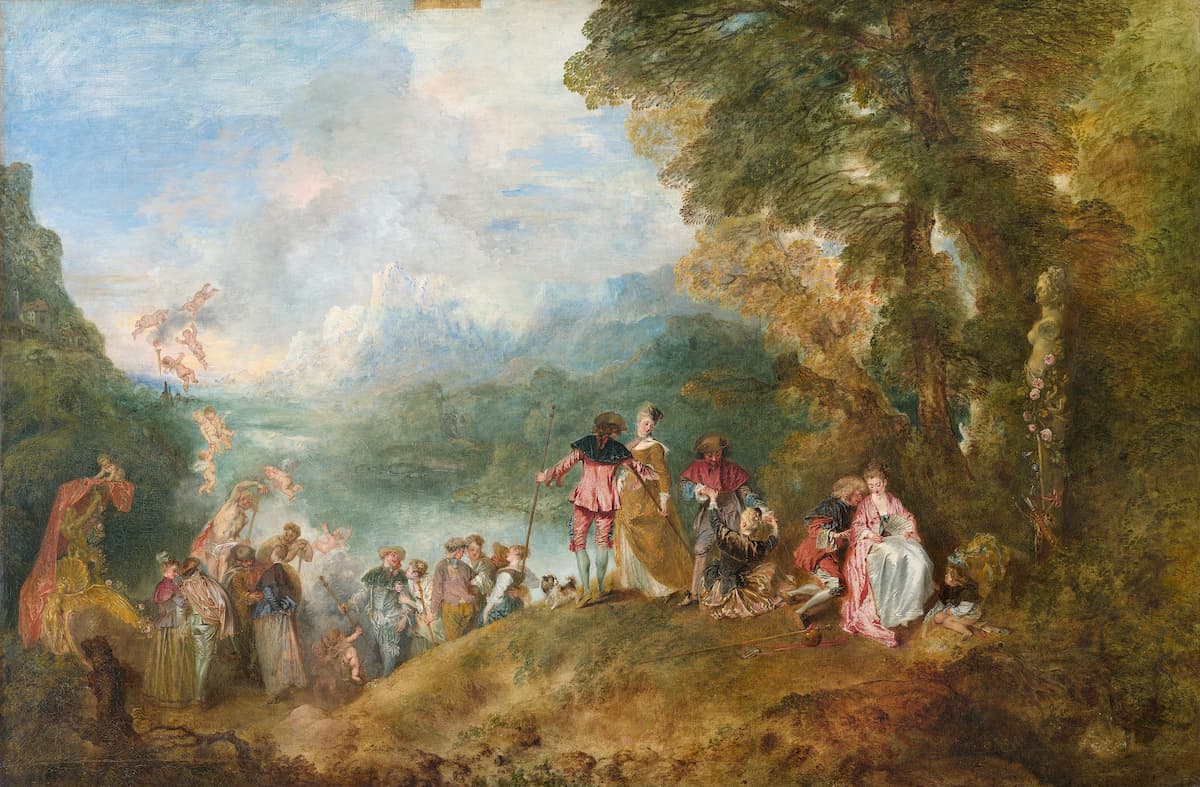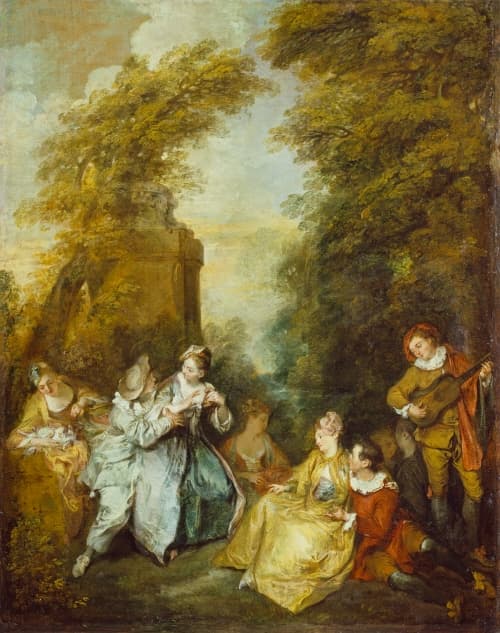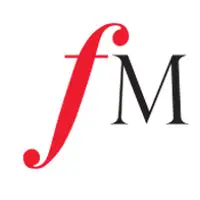It's all about the classical music composers and their works from the last 400 years and much more about music. Hier erfahren Sie alles über die klassischen Komponisten und ihre Meisterwerke der letzten vierhundert Jahre und vieles mehr über Klassische Musik.
Total Pageviews
Saturday, May 27, 2023
Friday, May 26, 2023
Happiness in Love: Debussy’s L’isle Joyeuse
by Maureen Buja, Interllude
The Fêtes galante style was a term specifically created by the French Academy in the early 18th century to describe Watteau’s paintings of country or parkland parties. It was his way of giving his patrons what they wanted, namely, pictures of themselves, and of giving the Academy what they wanted, namely, pictures on historical or mythological themes. The Academy disapproves of straight portraiture, but a patron has demands he will make on a poor painter, so what was Watteau to do?

Watteau: Embarkation for Cythera (1717)
Cythera, or, in modern Greek Kythira, is the Ionian island where Venus / Aphrodite was born, so would have been a destination for lovers everywhere.

Lancret: Conversation galante (1719) (The Wallace Collection)
The painting is everything a patron could want in a work – beautiful landscape, beautiful figures in beautiful clothes, beautiful statuary, and cupids everywhere. For the Academy, it’s a classical scene with mythological overtones. For the viewer, we have so many expressions of joy in the work: the couples in the middle of the work give us three stages of love – one couple in front of the statue is still engaged in their tryst, the three couples under the trees are in the acts of disengaging, while the couple walking down the hill are looking back in memory. More couples down by the boat are embarking for their voyage back to home. There’s no sorrow, no sadness, just a happiness and satisfaction in a perfect world.
Other painters, such as Fragonard, Lancret, and François de Troy also painted works in this heightened style, but the style itself was gone by the mid-18th century.

Jean François de Troy: La Déclaration d’amour (1731) (Berlin: Charlottenburg Palace)
The French composer Claude Debussy (1862–1918), known for his mastery in making one genre of painting, French Impressionism, into music, took up Watteau’s pastoral ideals with a work from 1904, L’isle Joyeuse, that gave a modernist twist to the older genre. First written for piano, it was later orchestrated with Debussy’s permission by the Italian conductor Bernardino Molinari. The orchestral work had its debut in 1923.
The piano version seems like it starts us at a precarious landing. The dancing rhythms carry us onto the island and up to the grove of Venus, where all delights await. It’s very much a personal piece, as though we are looking through the eyes of a character to see what’s around us.
As an orchestral work, there’s a larger scope for setting the scene. More than just involving an individual character, the orchestra can provide a whole world of people. The celebration is heightened, and there’s more details in the sound picture – the woodwinds flitter Cupid-like, the harp adds another voice, and with the brass sound, it’s as though the whole world glitters.
Conveying a picture in music is difficult but, in this work, Debussy and his orchestrator Molinari give us a world we wish we could just step into.
Thursday, May 25, 2023
Till The End Of Time Vol. II
Disc 2
I'm Always Chasing Rainbows
My Reverie
Dream of Love
And This Is My Beloved
Full Moon and Empty Arms
Somewhere, My Love
The Most Beautiful Girl in the World
This Nearly Was Mine
On the Boardwalk (In Atlantic City)
Baubles, Bangles and Beads
Hello, Young Lovers
It's a Grand Night for Singing
Someday My Prince Will Come
Out of My Dreams
A Wonderful Guy
Goodnight, My Someone
Oh, What a Beautiful Morning
Moon Love
Till The End Of Time Vol. I
Disc 1
Some Enchanted Evening
Bewitched, Bothered and Bewildered
Hey There
Smoke Gets in Your Eyes
With a Song in My Heart
Autumn Leaves
Easy to Love
The Song from Moulin Rouge (Where Is Your Heart)
Star Dust
I'll Get By (As Long as I Have You)
Night and Day
Laura
How Deep Is the Ocean?
Till the End of Time
Tonight We Love
Intermezzo (A Love Story)
No Other Love
Rhapsody in Blue
London Symphony Orchestra ♫ The Symphonic Beatles Play ♫
London Symphony Orchestra ♫ and London Pop Choir
Play ♫ The Best of The Beatles | HD/HQ
The most soothing pieces of classical music – in Mental Health Awareness Month

Classic FM presenters chose the pieces of music that bring them calm and solace, in times of need.
Various studies have proven the calming effect of classical music. As well as having the power to ease nerves and jitters, and decrease your heart rate, it can also lower your cortisol levels and increase blood flow to the brain. There’s even a study out there that says it takes ‘nine minutes’ for music to make you happy, and to start smiling and laughing more.
In Mental Health Awareness Month, which this May focuses on anxiety, we asked some of our evening Classic FM presenters to tell us about the pieces of classical music that bring them calm and focus, when times are tough.
From Debussy to Delius, here are the soothing pieces they chose.
Rachmaninov – ‘Adagio Sostenuto’ from Piano Concerto No.2
“If any piece has that little touch of magic, it’s what we like to call ‘Rach 2’. It’s simply one of the beautiful pieces of music, with soaring melody after soaring melody. And the nation agrees about that magic too – it's currently sitting at the top the Classic FM Hall of Fame.”

Rachmaninoff - Piano Concerto No. 2 in C minor, II. Adagio Sostenuto
Delius – On Hearing the First Cuckoo in Spring
“I find a walk in the park or ideally a big country ramble really helpful when I’m feeling stressed or down. But of course that isn’t always possible. Listening to this piece conjures up the beauty and serenity of the outdoors which I find instantly calming and restful.”

Delius - On Hearing the First Cuckoo in Spring
Bach – ‘Prelude’ from Cello Suite No.1
“This piece is just like a big musical hug. It’s one of the pieces we used to have playing in the house all the time when I was growing up, and it’s really helped me over the years when I need a moment of quiet reflection. When it doubt, always turn to Bach…”

Yo-Yo Ma | 'Prelude' from Bach's Cello Suite No. 1 | Classic FM Sessions
Mahler – ‘Adagietto’ from Symphony No.5
“Like so many people, I associate Mahler’s Symphony No.5 with Death in Venice, a restless and at times disturbing movie. Mahler himself called the first movement a ‘Funeral March’. But the Adagietto was a love song for his new wife and it is ripe with emotion. I adore Venice and once spent a very happy time studying there so for me this music brings back positive memories of a special and dreamy time. A certain way to lift my mood.”
Ritula Shah: Calm Classics, weekdays 10pm-1am

Mahler: Symphony No. 5 (Adagietto) / Rattle · Berliner Philharmoniker
John Barry – The Beyondness of Things
“Now, if ever there was a Calm Classics favourite, this is it. A beautiful melody, evocative harmony, with the sort of contemporary touch only John Barry can add. A pure musical tonic for when you need that moment of stillness.”

Barry: The beyondness of things
Chopin – Ballade No.4
“Chopin, always Chopin when times are tough. It’s difficult to choose a single piece but there is such a wide range of emotion in Ballade No.4, it seems like the perfect choice. Poetic and complex - a mirror on our sometimes turbulent inner lives.”
Ritula Shah: Calm Classics, weekdays 10pm-1am

Chopin - Ballade No. 4 in F Minor (4M Special)
Alberto Giurioli – ‘Tutto è bellissimo’
“My daughter Ella Rose loves this piece. It’s calming and relaxing, and helps us both wind down at the end of the day. Listening to this just puts tingles down my spine. One of those pieces that makes me think, ‘I wish I could play piano like this!’.”
Debussy – ‘Clair de lune’ from Suite Bergamasque
“Popular for good reason. I adore this piece so much that it is the ringtone on my phone. Who wants to be jolted into answering a call? I’d rather be gently bathed in moonlight and believe the world is a calm and peaceful place.”
Ritula Shah: Calm Classics, weekdays 10pm-1am

Lang Lang – Debussy: Suite bergamasque, L.75: III. Clair de lune
Tuesday, May 23, 2023
Erik Satie | History's Weirdest and Most Eccentric Musician
Erik Satie was a French composer and pianist, born on May 17th, 1866 and by all accounts, he was thought of as a talentless musician in his formative years. At least that’s how Georges Mathias, his professor of piano at the Paris Conservatoire described him. "Insignificant,” “laborious," and "worthless" were his exact words.
Émile Decombes, another one of Satie’s piano professors called him "the laziest student in the Conservatoire."
It’s true, Satie wasn’t much of an accomplished piano player -- he was a horrible sight reader -- but he was a master composer.
His compositions have been featured on everything from The Simpsons and How I Met Your Mother to The Royal Tenenbaums, Dr. Who and The Benny Hill Show, not to mention hundreds of commercials.
Subscribe to:
Comments (Atom)


